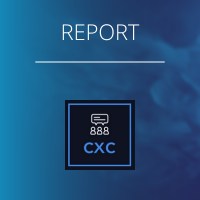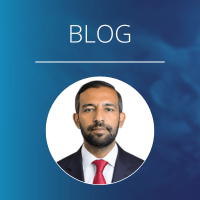Top 6 Questions and Answers about Risk Management
By treasuryXL
Risk Management is the practice of planning for unexpected expenditures. It is primarily about mitigating and avoiding the impact of the changing financial environment on the company’s cash flow objectives. In this article, we will take a look at the Top 6 Questions and Answers about Risk Management.

6 Top Questions about Risk Management
1. What does a Risk Manager do?
A risk manager evaluates and informs leadership about various risks in areas like foreign exchange and interest rates, shaping company policies and procedures. They implement and oversee risk management strategies, involving stakeholder management and regular policy reviews to mitigate potential impacts on the organization.
2. What are Risk Management Strategies?
Treasury risk management strategies are employed to identify, assess, and mitigate financial risks that could adversely affect a company’s financial stability and profitability. These strategies typically involve hedging against currency fluctuations, diversifying investments across asset classes, maintaining adequate liquidity reserves, and implementing robust internal controls to safeguard against fraud and errors. By implementing effective risk management strategies, companies can operate more confidently and minimize their exposure to potential financial losses.
3. What are the Key Components of Risk Management?
The key components of effective treasury risk management involve:
- Identifying and assessing risks: Recognizing potential financial threats, such as interest rate fluctuations, currency movements, and credit risks.
- Mitigating risks: Implementing strategies to reduce or eliminate the impact of identified risks, including hedging, diversification, and liquidity management.
- Continuous monitoring: Regularly evaluating and updating risk management strategies to adapt to changing market conditions and business objectives.
4. How to effectively Mitigate Risk?
Effective treasury risk management involves identifying, assessing, and implementing strategies to minimize the impact of financial risks that could impact the organization’s financial stability and profitability. These strategies may include hedging, diversifying investments, maintaining adequate liquidity, and implementing robust internal controls.
5. If FX risk management is done well, why do companies still report losses?
Most of the time, mitigating risk costs money. Most often, FX risk management solutions are bought from banks. Furthermore, such solutions do not usually offer 100% mitigation. (Indeed, 100% mitigation is very expensive.) Consequently, companies do still sometimes report losses based on FX fluctuations, despite their risk management efforts.
6. Who’s Responsible for Risk Management Failures?
This is a question where companies often struggle. Risk can be mitigated, but it usually cannot be avoided entirely, making it difficult to assign responsibility to one person. For example, sugarcane harvest results depend on the weather: the amount of sugarcane and the quality of the harvest vary. Quantifying this risk, modelling it, structuring a solution, and buying hedging products are the expertise of a treasurer. Nevertheless, it is difficult to assign responsibility for a failure to predict changes in the weather.
Read more about Risk Management and check out these treasury topics as well:
Click and Scroll! Here are more articles that you might like…
 https://treasuryxl.com/wp-content/uploads/2025/06/VU-program-200-2.png
200
200
treasuryXL
https://treasuryxl.com/wp-content/uploads/2018/07/treasuryXL-logo-300x56.png
treasuryXL2025-06-30 09:00:162025-06-30 14:20:47Online Info Session: Cash & Treasury Operations
https://treasuryxl.com/wp-content/uploads/2025/06/VU-program-200-2.png
200
200
treasuryXL
https://treasuryxl.com/wp-content/uploads/2018/07/treasuryXL-logo-300x56.png
treasuryXL2025-06-30 09:00:162025-06-30 14:20:47Online Info Session: Cash & Treasury Operations https://treasuryxl.com/wp-content/uploads/2025/06/Surecomp-BLOGS-featured-7.png
200
200
treasuryXL
https://treasuryxl.com/wp-content/uploads/2018/07/treasuryXL-logo-300x56.png
treasuryXL2025-06-30 07:00:312025-06-25 17:21:274 Key Takeaways On Trade Finance And Treasury
https://treasuryxl.com/wp-content/uploads/2025/06/Surecomp-BLOGS-featured-7.png
200
200
treasuryXL
https://treasuryxl.com/wp-content/uploads/2018/07/treasuryXL-logo-300x56.png
treasuryXL2025-06-30 07:00:312025-06-25 17:21:274 Key Takeaways On Trade Finance And Treasury https://treasuryxl.com/wp-content/uploads/2025/06/Embat-BLOGS-featured-7.png
200
200
treasuryXL
https://treasuryxl.com/wp-content/uploads/2018/07/treasuryXL-logo-300x56.png
treasuryXL2025-06-27 08:38:282025-06-27 08:39:37From Automation to Intelligence with TellMe
https://treasuryxl.com/wp-content/uploads/2025/06/Embat-BLOGS-featured-7.png
200
200
treasuryXL
https://treasuryxl.com/wp-content/uploads/2018/07/treasuryXL-logo-300x56.png
treasuryXL2025-06-27 08:38:282025-06-27 08:39:37From Automation to Intelligence with TellMe https://treasuryxl.com/wp-content/uploads/2024/01/Template_VACANCY-featured.png
200
200
treasuryXL
https://treasuryxl.com/wp-content/uploads/2018/07/treasuryXL-logo-300x56.png
treasuryXL2025-06-27 07:00:572025-06-25 16:47:47Vacancy Global Treasury Analyst – Amsterdam
https://treasuryxl.com/wp-content/uploads/2024/01/Template_VACANCY-featured.png
200
200
treasuryXL
https://treasuryxl.com/wp-content/uploads/2018/07/treasuryXL-logo-300x56.png
treasuryXL2025-06-27 07:00:572025-06-25 16:47:47Vacancy Global Treasury Analyst – Amsterdam https://treasuryxl.com/wp-content/uploads/2022/04/Ralph-Lauren.png
200
200
treasuryXL
https://treasuryxl.com/wp-content/uploads/2018/07/treasuryXL-logo-300x56.png
treasuryXL2025-06-26 10:37:122025-06-26 10:37:12Treasury Internship @ Ralph Lauren
https://treasuryxl.com/wp-content/uploads/2022/04/Ralph-Lauren.png
200
200
treasuryXL
https://treasuryxl.com/wp-content/uploads/2018/07/treasuryXL-logo-300x56.png
treasuryXL2025-06-26 10:37:122025-06-26 10:37:12Treasury Internship @ Ralph Lauren https://treasuryxl.com/wp-content/uploads/2025/06/Template_BLOGS-featured-2.png
200
200
treasuryXL
https://treasuryxl.com/wp-content/uploads/2018/07/treasuryXL-logo-300x56.png
treasuryXL2025-06-26 07:00:022025-06-25 11:52:52Corporate Treasury: Approaches & Experiences with Multilateral Netting
https://treasuryxl.com/wp-content/uploads/2025/06/Template_BLOGS-featured-2.png
200
200
treasuryXL
https://treasuryxl.com/wp-content/uploads/2018/07/treasuryXL-logo-300x56.png
treasuryXL2025-06-26 07:00:022025-06-25 11:52:52Corporate Treasury: Approaches & Experiences with Multilateral Netting https://treasuryxl.com/wp-content/uploads/2024/02/Featured_Treasurer-Search.png
200
200
treasuryXL
https://treasuryxl.com/wp-content/uploads/2018/07/treasuryXL-logo-300x56.png
treasuryXL2025-06-25 07:00:372025-06-23 13:34:08Why You Should (Not) Hire an Interim Manager
https://treasuryxl.com/wp-content/uploads/2024/02/Featured_Treasurer-Search.png
200
200
treasuryXL
https://treasuryxl.com/wp-content/uploads/2018/07/treasuryXL-logo-300x56.png
treasuryXL2025-06-25 07:00:372025-06-23 13:34:08Why You Should (Not) Hire an Interim Manager https://treasuryxl.com/wp-content/uploads/2025/06/Nirav-Interview-1.png
200
200
treasuryXL
https://treasuryxl.com/wp-content/uploads/2018/07/treasuryXL-logo-300x56.png
treasuryXL2025-06-24 07:00:242025-06-23 10:59:38In House Bank – Your Money Works For You Under Your Watch
https://treasuryxl.com/wp-content/uploads/2025/06/Nirav-Interview-1.png
200
200
treasuryXL
https://treasuryxl.com/wp-content/uploads/2018/07/treasuryXL-logo-300x56.png
treasuryXL2025-06-24 07:00:242025-06-23 10:59:38In House Bank – Your Money Works For You Under Your Watch https://treasuryxl.com/wp-content/uploads/2025/06/Surecomp-BLOGS-featured-6.png
200
200
treasuryXL
https://treasuryxl.com/wp-content/uploads/2018/07/treasuryXL-logo-300x56.png
treasuryXL2025-06-23 07:00:322025-06-19 10:16:24AI, Digital Adoption, and Real Transparency – Questions from Our Trade Finance Session
https://treasuryxl.com/wp-content/uploads/2025/06/Surecomp-BLOGS-featured-6.png
200
200
treasuryXL
https://treasuryxl.com/wp-content/uploads/2018/07/treasuryXL-logo-300x56.png
treasuryXL2025-06-23 07:00:322025-06-19 10:16:24AI, Digital Adoption, and Real Transparency – Questions from Our Trade Finance Session


